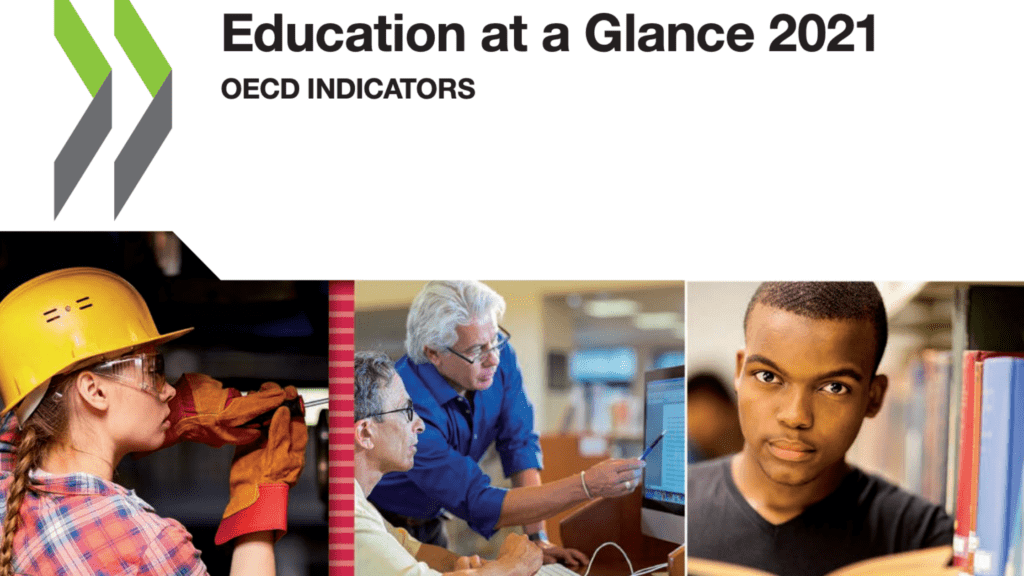The “Education at a Glance 2021” report by the Organisation for Economic Co-operation and Development (OECD) presents an expansive view of the global education landscape, focusing on equity. The 2021 report is especially significant, given the context of the COVID-19 pandemic, which exacerbated existing educational inequalities and introduced new challenges. While the report is comprehensive and has vast data and statistics, this article is designed to explore some underlying narratives and implications that warrant a deeper examination.
Equity in Education: The Unfinished Agenda
The central theme of equity is both timely and relevant. Despite decades of progress, educational outcomes remain uneven across different socioeconomic groups, genders, and immigrant statuses. The report’s statistics are a stark reminder that socio-economic background continues to be a major determinant of educational success. This raises critical questions about the effectiveness of current educational policies and the genuine accessibility of quality education for all.
One cannot ignore the persistent gap in educational attainment between students from different backgrounds. The finding that a child from a disadvantaged family is expected to take five generations to reach the average national income is alarming. This statistic alone underscores the urgency for systemic changes. Policymakers must rethink their strategies to ensure that education serves as a genuine leveller of opportunity rather than perpetuating cycles of disadvantage.
The Impact of COVID-19: A Catalyst for Change?
The COVID-19 pandemic brought unprecedented disruption to education systems worldwide. School closures and the sudden shift to remote learning laid bare the digital divide. Students from disadvantaged backgrounds were disproportionately affected, lacking access to the necessary technology and a conducive learning environment at home. The report highlights how these disruptions continue to risk widening the existing educational gaps.
However, this crisis also presents an opportunity for transformation. The forced integration of technology into education could drive long-term changes in teaching and learning methods. Yet, this requires substantial investment in digital infrastructure and teacher training. The pandemic has highlighted the potential of technology to enhance learning, but it has also shown that without equitable access, technological advancements can exacerbate existing inequalities.
Financial Investment: More than Just Numbers
The report’s analysis of financial investment in education reveals significant disparities. On average, higher levels of education receive more funding, which correlates with better outcomes. However, this raises questions about the allocation of resources. Is the current distribution of educational funding truly aligned with the goal of equity?
There is a compelling argument for reallocating resources towards early childhood and primary education, especially in disadvantaged areas. Early intervention is essential in levelling the playing field and providing all children with a strong foundation. Moreover, financial support mechanisms, such as grants and scholarships, cannot be overstated in facilitating access to higher education for students from low-income families.
Rethinking Teacher Roles and Training
Teachers are at the heart of the educational process, yet the report highlights significant challenges in attracting and retaining qualified teachers, particularly male teachers. The gender disparity in the teaching profession, especially at the primary and secondary levels, is concerning. This imbalance can affect students’ perceptions and reinforce gender stereotypes.
Moreover, the report points out the need for continuous professional development, particularly in multicultural and multilingual education areas. As classrooms become increasingly diverse, teachers must be equipped with the skills to address their students’ varied needs. Investment in teacher training is paramount for improving educational outcomes and facilitating an inclusive learning environment.
Lifelong Learning: Adapting to a Changing World
Job markets can be volatile, and the importance of lifelong learning cannot be overstated. The report’s troubling findings that participation in adult learning is significantly lower among low-skilled and older adults highlight a critical gap in current education systems, which must be addressed to ensure that individuals can continuously adapt and prosper.
Promoting lifelong learning requires a concerted effort from governments, educational institutions, and employers. Flexible learning pathways, recognition of prior learning, and accessible training programmes are essential components of a robust lifelong learning strategy. As the nature of work changes, so must our education and skill development approaches.
Conclusion: Towards a More Equitable Future
The “Education at a Glance 2021” report is a clarion call for action. It lays bare the inequities within education systems and the urgent need for reform. The data and insights provided should serve as a roadmap for policymakers, educators, and stakeholders committed to creating more equitable and effective educational environments.
Achieving equity in education is a complex challenge, but it is not insurmountable. By addressing the root causes of inequality, investing in early and continuous education, and integrating technology to bridge gaps, we can move towards a future where education truly serves as a pathway to opportunity for all. The COVID-19 pandemic has shown us both the vulnerabilities and the potential for innovation within our education systems. It is now up to us to seize this moment and drive meaningful change.



